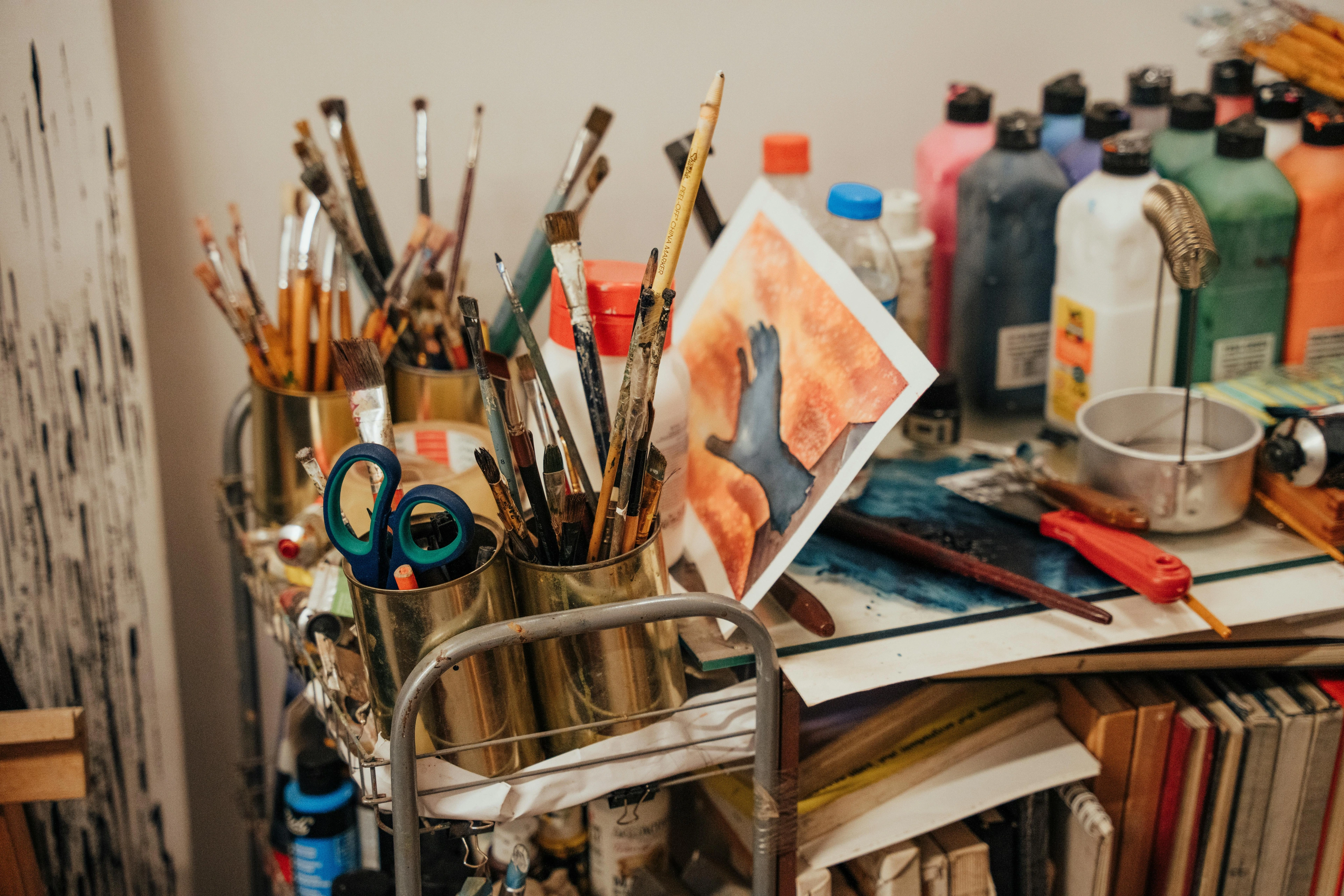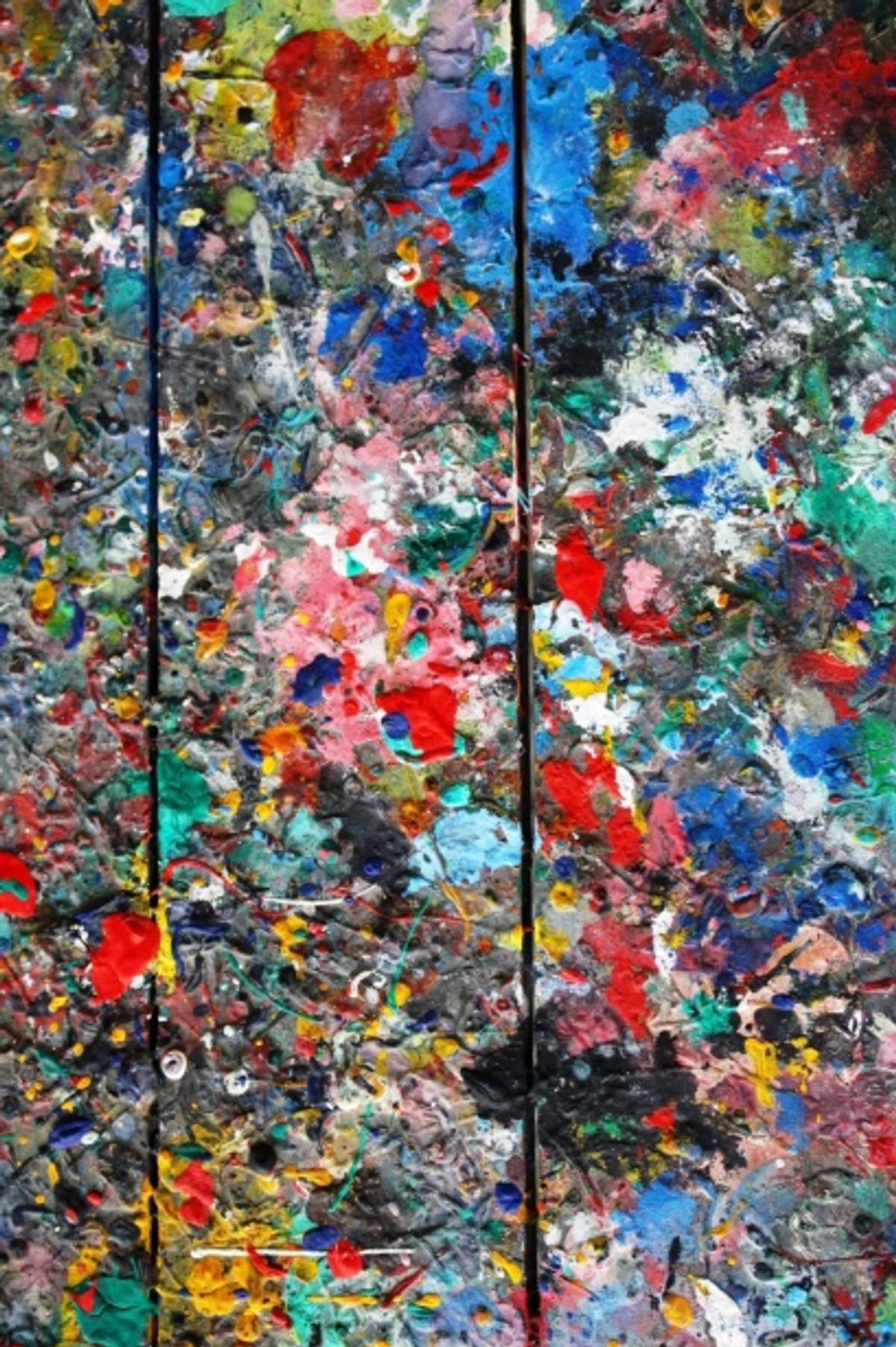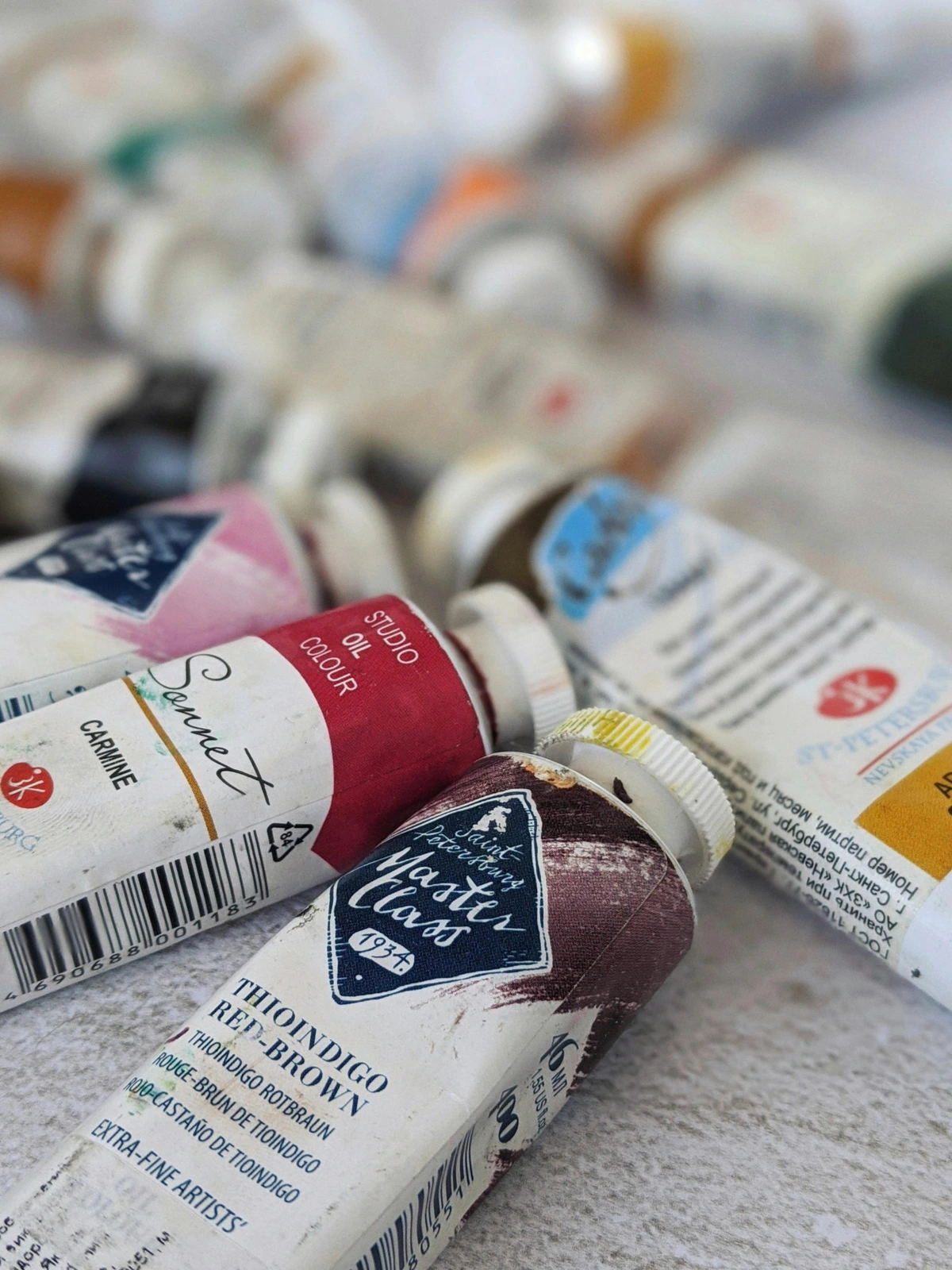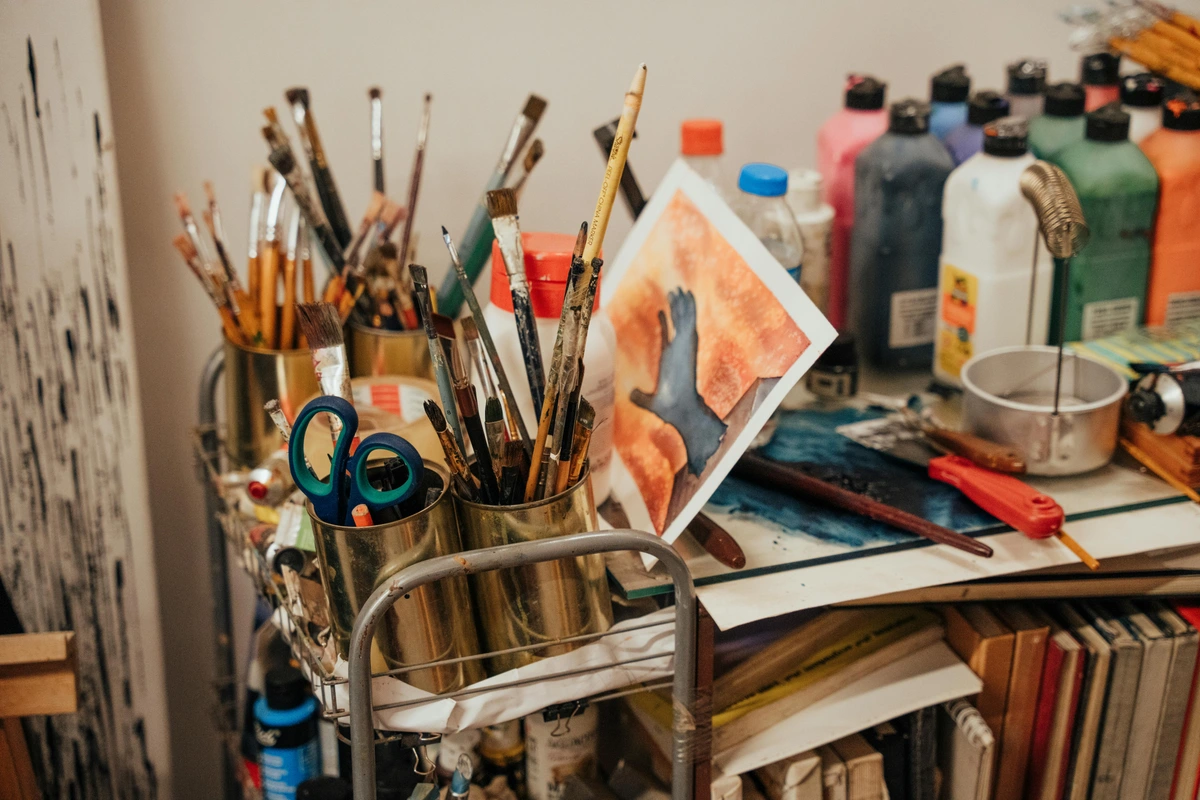
Eco-Friendly Art Supplies: My Journey to a Sustainable Art Studio
Explore my personal journey into sustainable art supplies, from natural pigments to ethical brushes. Discover tips, recommendations, and the challenges of creating art that's kind to the planet.
Embracing a Greener Palette: My Journey with Eco-Friendly Art Supplies
I used to be one of those artists who, perhaps a little too absorbed in the act of creation, didn't give much thought to the lifecycle of my art supplies. My focus was purely on the canvas, the color, the expression. And, let's be honest, who has time to worry about sustainability when you're wrestling with a particularly stubborn shade of cadmium red? But then, a quiet thought started nagging at me, like a forgotten tube of paint hardening in the drawer: Was I creating beauty while inadvertently contributing to environmental ugliness?
It felt a bit hypocritical, really. To pour my heart into abstract pieces, to celebrate the raw beauty of the world on canvas, yet potentially be using materials that harmed the very planet I drew inspiration from. This isn't about perfection, mind you; my studio is still a beautiful, chaotic mess, and I'm far from a zero-waste guru. But it is about mindful steps, about trying to make better choices, one brushstroke at a time.
Beyond the Canvas: The Unseen Environmental Footprint of Our Art
Look, nobody sets out to be an environmental villain with a paintbrush. We buy what's available, what works, what our teachers recommended. But the truth is, traditional art supplies often carry a hefty environmental footprint, stretching far beyond the moment we uncork a tube or dip a brush. Ever stopped to think about the journey your paints took to get to your palette, or where they go once they're washed down the drain?

From the extraction of raw materials to manufacturing processes that consume vast amounts of water and energy, to the inevitable plastic packaging that often outlives the art itself, the lifecycle of art supplies is complex. Toxic pigments (like that infamous cadmium red, a heavy metal) can leach into water systems, petroleum-based binders in our acrylics contribute to fossil fuel dependency, and brushes might be crafted from non-renewable resources or unsustainably sourced animal hair. It's a lot when you start to actually think about it.
This isn't meant to shame anyone, myself included, but rather to inform. Once you know, you can't really un-know, can you? And for me, that realization sparked a desire to do better. To find ways to create art that aligns with my growing commitment to living more sustainably. It's a journey, not a destination, much like the path to growing as an artist or, for that matter, building a timeline of your creative life.
My Conscious Palette: A Dive into Sustainable Pigments & Paints
Paints, for me, were the biggest hurdle. I adore the versatility of acrylics, as many artists do, and I've even explored their history and evolution. But they are, at their core, plastic-based. And while I still use them for certain effects, I've been actively seeking out alternatives and more conscious brands, pushing myself to learn how artists use color with a different set of materials.
Exploring Alternatives to Traditional Paints:
- Natural Pigments: I've been fascinated by earth and mineral pigments. Imagine painting with actual dirt! It sounds primitive, but these are the colors artists used for centuries, long before synthetic alternatives. Think ochres, siennas, and umbers, which come directly from the earth and often require minimal processing—usually just grinding and washing. Sourcing these ethically means ensuring they're not from environmentally sensitive areas or exploited labor, which is a consideration for any raw material, really.
- Plant-Based Binders: For watercolors, it's often gum arabic, a natural tree resin. For oils, linseed oil (derived from flax plants) is a classic, natural choice. Exploring these traditional binders with natural pigments opens up a whole new world of color and texture. The sustainability of these binders often comes down to responsible harvesting practices for the plants they originate from. If you're just starting with watercolors, I have some thoughts on essential watercolor supplies that might spark some ideas for greener choices.
- The VOC Verdict: Volatile Organic Compounds (VOCs) aren't just bad for the environment; they're bad for us. Many traditional paints, solvents, and varnishes release these harmful chemicals into the air, contributing to indoor air pollution and health issues like headaches and respiratory problems. Switching to zero- or low-VOC paints and mediums significantly improves studio air quality and reduces environmental impact. Look for brands that clearly label their VOC content or explicitly state they are VOC-free.
Beyond the Canvas: Eco-Friendly Oils and Watercolors
While acrylics are a challenge, there are other avenues. Water-mixable oil paints can significantly reduce the need for harsh solvents like turpentine. And for watercolors, many brands are inherently more eco-friendly, using natural binders and pigments. Even then, paying attention to the pigment list and avoiding heavy metals is a good practice. For a deeper dive into brands I've explored, check out a broader review of the best eco-friendly paint brands for artists.

Brushes, Canvases, and Studio Practices: Expanding the Green Studio
It's not just about the paint, of course. My brushes and canvases are just as central to my practice, and I've found plenty of opportunities to make greener choices there too. It's like finding new ways to express myself in my abstract art, which you can see examples of here.
Ethical Brushes: Bristles with a Conscience
Traditional brushes often use animal hair (sable, squirrel, hog) or synthetic bristles made from petroleum-based plastics. Both have their drawbacks. Animal hair raises ethical concerns about sourcing and animal welfare, while plastic bristles contribute to plastic waste. My shift has focused on:
- Vegan Bristles: Many high-quality synthetic brushes are now made from recycled plastics or innovative plant-based materials, offering performance comparable to animal hair without the ethical dilemma.
- Sustainably Sourced Handles: Look for handles made from FSC-certified wood (Forest Stewardship Council) or bamboo, ensuring responsible forestry practices.
- Longevity: Regardless of material, caring for your brushes extends their life, reducing consumption. I've found great tips in this guide on cleaning and caring for your paint brushes.
Sustainable Surfaces: Beyond the Traditional Canvas
Canvases are another area ripe for green innovation. Traditional cotton or linen canvases have their own environmental footprint (water, pesticides in cotton farming). Alternatives include:
- Recycled Materials: Papers and boards made from post-consumer waste are fantastic for sketches, studies, and even finished works.
- FSC-Certified Papers: Ensures the wood pulp comes from responsibly managed forests.
- Bamboo Canvases: Bamboo is a rapidly renewable resource, making it an excellent alternative. Brands are starting to offer canvas made from organic cotton or hemp, requiring less water and fewer pesticides than conventional cotton.
Greening Your Studio Habits:
Beyond materials, our daily studio practices can make a huge difference. Reducing water usage during cleanup, properly disposing of paint water and solvents (never down the drain!), and reusing containers are simple, impactful steps. Even things like maximizing natural light to reduce energy consumption contribute to a more sustainable practice.

Navigating the Green Art Market: Challenges and Choices
Making the switch isn't always straightforward. I've definitely faced some bumps on the road, like when a




